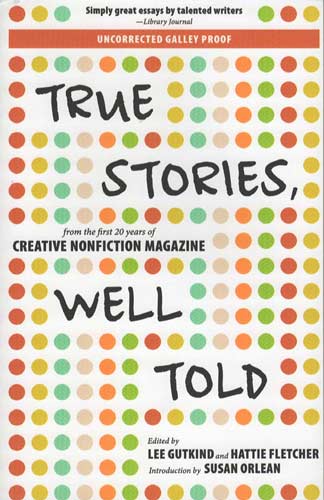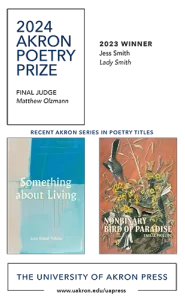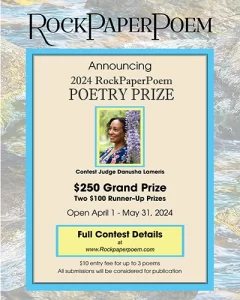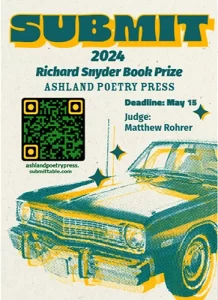True Stories, Well Told

From the first 20 years of Creative Nonfiction Magazine
Lee Gutkind and Hattie Fletcher
August 2014
Jason Hess
The twenty-two selections in this nonfiction collection are culled from twenty years of Creative Nonfiction Magazine. I was worried it would inevitably suffer from aesthetic myopia. But the selections are eclectic enough to avoid this. I learned about the history of sign language, the particulars of Finnish baseball, and about the difficulties and rewards of teaching a university course on the philosophy of death. This whirlwind collection features an exceptionally talented stable of writers, all of whom are present as characters in their essays. The twenty-two selections in this nonfiction collection are culled from twenty years of Creative Nonfiction Magazine. I was worried it would inevitably suffer from aesthetic myopia. But the selections are eclectic enough to avoid this. I learned about the history of sign language, the particulars of Finnish baseball, and about the difficulties and rewards of teaching a university course on the philosophy of death. This whirlwind collection features an exceptionally talented stable of writers, all of whom are present as characters in their essays. The underlying argument of True Stories, Well Told is that we can learn a great deal about the human condition through careful dissection of the intimately personal.
In the essay “Mrs. Kelly,” ER doctor Paul Austin chooses not to admit a patient experiencing chest pain. The tests are normal. The patient returns home and dies of a heart attack. Speaking to a colleague and friend, Austin reaches for understanding. “Missing something really obscure, or something so rare no one else would’ve picked it up either, [. . .] that wouldn’t be so hard to live with. But sending home a patient who is having a heart attack?” Austin’s prose renders his emotional, intellectual, and spiritual grapplings palpable. Heartbreaking isn’t the appropriate word, but it gets at the right emotion.
Meredeth Hall’s “Without a Map” is a standout. She brings readers on a feverish walk through Lebanon, Syria, and Jordan. In her postscript to the essay, Hall writes, “A friend calls this my ‘suicide walk.’ If that is true, how could I speak that story without melodrama, without explanation and analysis?” She pulls it off in spectacular fashion, by a process reminiscent of alchemy. The resultant essay is hypnotic.
Jerald Walker’s “The Heart” is a rocket of a piece about his brother’s drug-addled marriage. Every paragraph is as gripping as the opening line: “For a decade, my brother struggled to save his marriage, but late one winter night, he accepted that it was over, right after his wife almost cut off his thumb.” Walker’s essay left me with a strange mix of satisfaction and longing for more. One interesting aspect of True Stories, Well Told is that many of the writers contributed retrospectives on their writing process. In Walker’s case, this addition is nearly as compelling as his essay. He writes, “Of course, stabbings have a tendency to bring a tension all their own.” I’m taking his word for it.
The postscripts contribute to the sense of this collection as a nonfiction writer’s manual. They offer little windows into the tightrope process of disassembling, examining, and rearranging real-life episodes into art. The writers in True Stories, Well Told won’t directly tell you how to reassemble your own memories into essays, but you might be inspired to make the attempt. This is how I fell into the genre: When I was fifteen, my favorite book was Haynes Automotive Repair Manual: VW 1700/1800/2000 Transporter 1972 thru 1979. It was gripping. I also owned the competing publication from Chilton, but it lacked the poetry of the Haynes, and I never finished it. The book demonstrated how to disassemble and reassemble every automotive system. The language was conversational and particular, accidental personal essay.
Is it relevant to an honest book review that automotive repair manuals were my first nonfiction love? Perhaps it’s related tangentially, in the spirit of full disclosure. Likewise, Creative Nonfiction Magazine founder and editor Lee Gutkind closes this collection with fifty-three pages on his career as an academic, founding editor, and champion of the genre. The essay is more than twice as long as any other piece in the book. Readers learn how many push-ups Gutkind could do when he left the military (50, “without breaking a sweat”) and what motorcycle an English professor should ride (BMW). On literary academia, Gutkind writes, “[…] a guy like me, coming from the wrong side of the tracks, could be ruthlessly frozen out.” Creative Nonfiction Magazine has played a significant role in the genre’s inclusion in MFA programs around the country. Gutkind has been at the forefront of this shift. Though not the highlight of the anthology, his contribution is interesting reading for anyone whose life has been affected or funded by the presence of creative nonfiction in the academy.
The most overt writing advice comes in Susan Orlean’s introduction: “Don’t over prepare. [. . .] On the other hand, do over-report. [. . . ] Write what you want to learn. Then learn it well enough to teach it.” Nonfiction professors should love this book.
The reality is this anthology will mostly be in the hands of writing students. And that’s not so bad. Creative Nonfiction Magazine, with all its success, is still a little magazine. If this book squeezes its way onto syllabi, and into the minds of curious students, perhaps they’ll take this as a sign of what they’ve been missing. There is something to learn from every writer in this collection. In her introduction, Orlean advises amateur writers, “Keep your favorite pieces of writing on your desk and imitate them.” True Stories, Well Told has earned its place on my desk.




